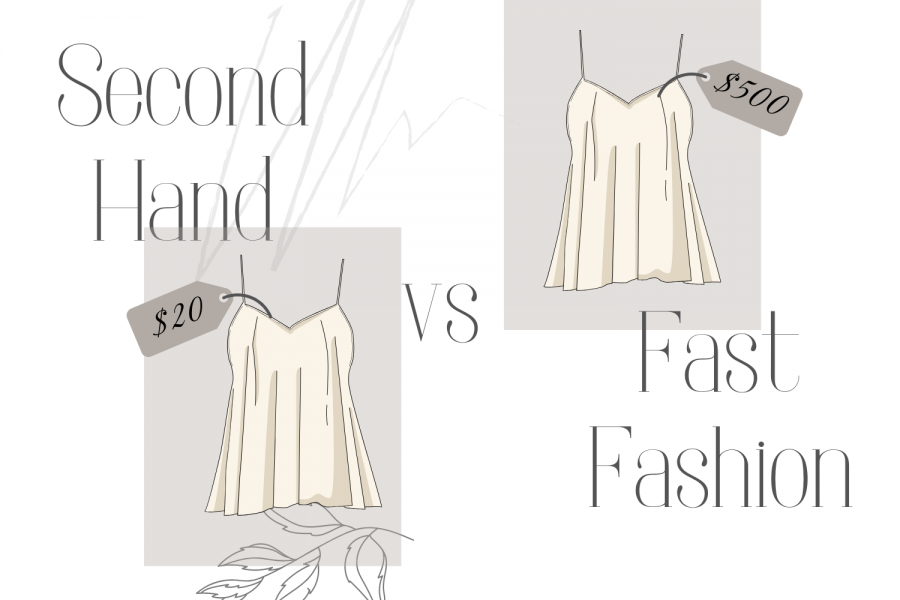Goodbye fast fashion, hello secondhand clothing
Many can buy an exact replica or similar piece of clothing without a price tag, which will benefit you wallet and the environment
“Fast fashion” clothing has damaged the environment, specifically the ocean and its ecosystems. Fast fashion also promotes hard child labor.
Ever since the early 2000s, fast fashion has increased in popularity due to American people partaking in consumerism. This has led to a major polluting problem and unfair living wages to workers according to BWSS.
“Fashion — a $2.5 trillion sector — is the second most polluting industry on earth, right behind oil,” an article by BWSS said. “The pressure to reduce costs and speed up production time means that the environmental corners are cut in the name of profit. Fast fashion’s negative impact includes the cheap, toxic textile dyes – with the fashion industry the second largest polluter of clean water globally after agriculture.”
The demand for new clothing to provide for this season’s trends is making child laborers work harder under bad conditions and low pay. Millions of children are deprived from their educational needs and are forced to go into work.
According to the International Labor Organization, “an estimated 170 million children are engaged in child labor, or 11% of the global population of children.” Sources state, “garment workers are often forced to work 14 to 16 hours a day, seven days a week. During peak season, they may work until 2 to 3 a.m. to meet the fashion brand’s deadline,” is said by Sustain Your Style. “Their basic wages are so low that they cannot refuse overtime – aside from the fact that many would be fired if they refused to work overtime.”
Fast fashion could be reduced by change. There are some solutions to this worldwide problem, such as thrifting and upcycling. Buying sustainably from eco-fashion companies can decrease the production in fast fashion. Consuming garments from small businesses and brands can promote the culture of second hand and sustainability.
“With fast fashion seasons now changing every single week, new garments are being produced far too often. Ditch fast fashion like its last week’s trends and start shopping thrift! Shopping thrift is the best way to reduce your clothing footprint,” a source from BWSS said. “It is a great way to find high quality, unique garments at a fraction of the price of buying new.”
In the local Tampa Bay area, there are secondhand shops and thrift stores many can visit. Goodwill, Salvation Army, Plato’s, Sunshine Thrift Store and Avalon Exchange are all examples of places to go to that aren’t correlated with “fast fashion.” If not in store, there are online ways including apps like Depop, Poshmark, Mercari and Grailed.
“Simply switching to thrifting isn’t going to completely solve all of the problems within the fashion and textile industry, but it is one way we can work to minimize our own carbon footprints and make small steps towards a better future,” SERC said.

